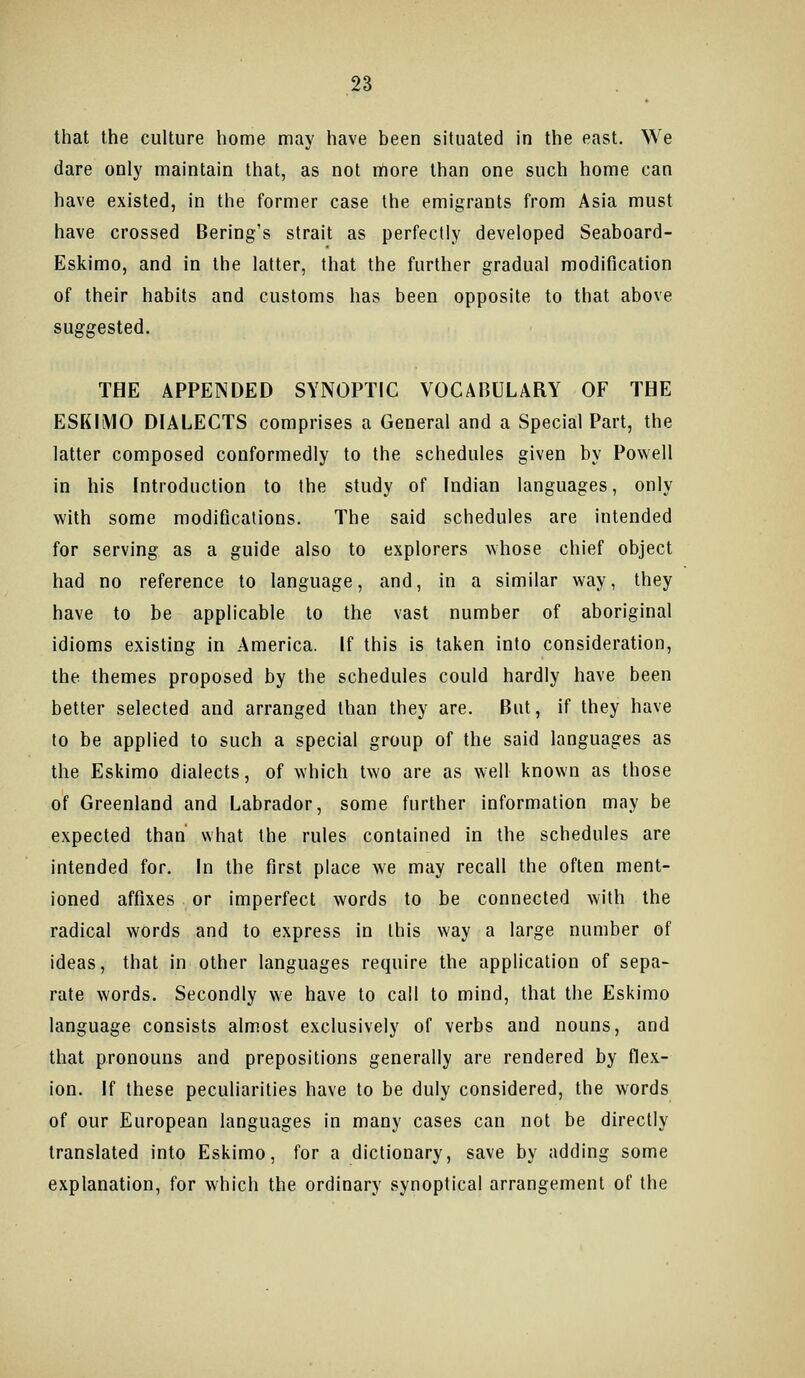
Full resolution (JPEG) - On this page / på denna sida - The origin of the Eskimo as traced by their language - Further conclusions - Plan of the vocabulary

<< prev. page << föreg. sida << >> nästa sida >> next page >>
Below is the raw OCR text
from the above scanned image.
Do you see an error? Proofread the page now!
Här nedan syns maskintolkade texten från faksimilbilden ovan.
Ser du något fel? Korrekturläs sidan nu!
This page has been proofread at least once.
(diff)
(history)
Denna sida har korrekturlästs minst en gång.
(skillnad)
(historik)
that the culture home may have been situated in the east. We
dare only maintain that, as not more than one such home can
have existed, in the former case the emigrants from Asia must
have crossed Bering’s strait as perfectly developed
Seaboard-Eskimo, and in the latter, that the further gradual modification
of their habits and customs has been opposite to that above
suggested.
THE APPENDED SYNOPTIC VOCABULARY OF THE
ESKIMO DIALECTS comprises a General and a Special Part, the
latter composed conformedly to the schedules given by Powell
in his Introduction to the study of Indian languages, only
with some modifications. The said schedules are intended
for serving as a guide also to explorers whose chief object
had no reference to language, and, in a similar way, they
have to be applicable to the vast number of aboriginal
idioms existing in America. If this is taken into consideration,
the themes proposed by the schedules could hardly have been
better selected and arranged than they are. But, if they have
to be applied to such a special group of the said languages as
the Eskimo dialects, of which two are as well known as those
of Greenland and Labrador, some further information may be
expected than what the rules contained in the schedules are
intended for. In the first place we may recall the often
mentioned affixes or imperfect words to be connected with the
radical words and to express in this way a large number of
ideas, that in other languages require the application of
separate words. Secondly we have to call to mind, that the Eskimo
language consists almost exclusively of verbs and nouns, and
that pronouns and prepositions generally are rendered by
flexion. If these peculiarities have to be duly considered, the words
of our European languages in many cases can not be directly
translated into Eskimo, for a dictionary, save by adding some
explanation, for which the ordinary synoptical arrangement of the
<< prev. page << föreg. sida << >> nästa sida >> next page >>